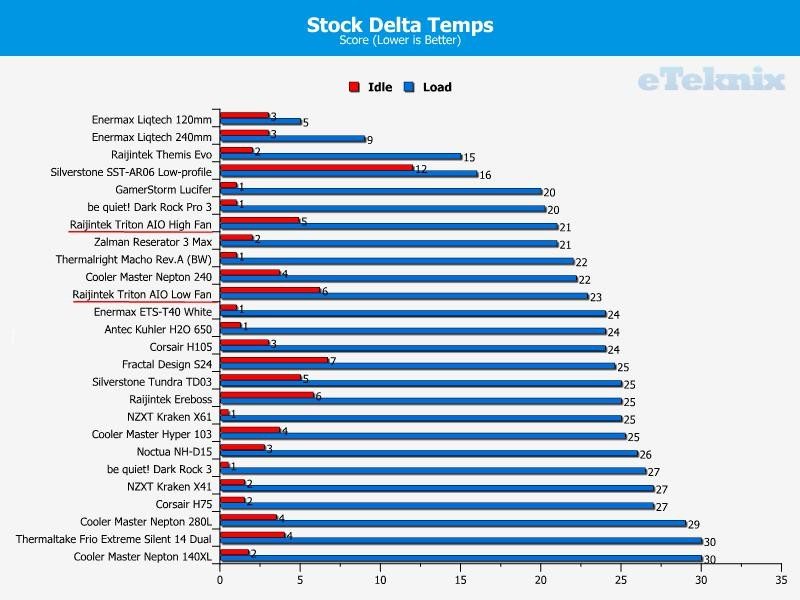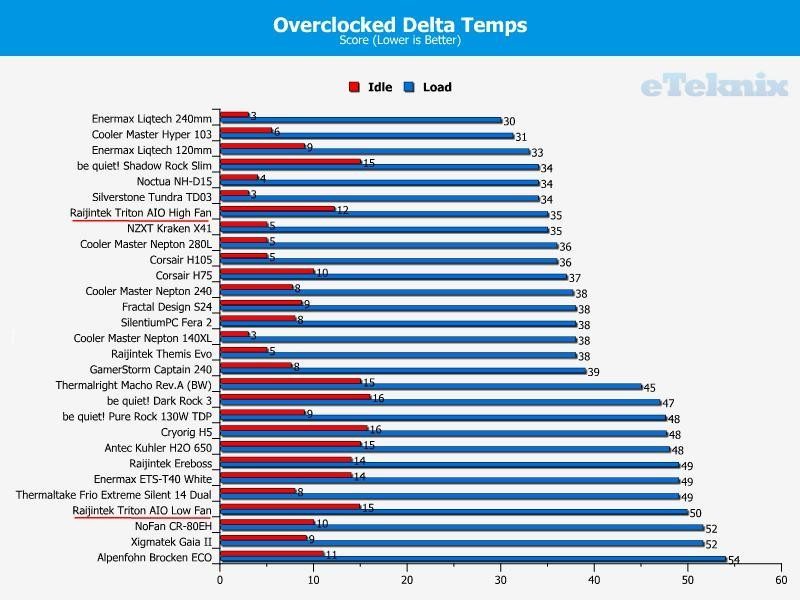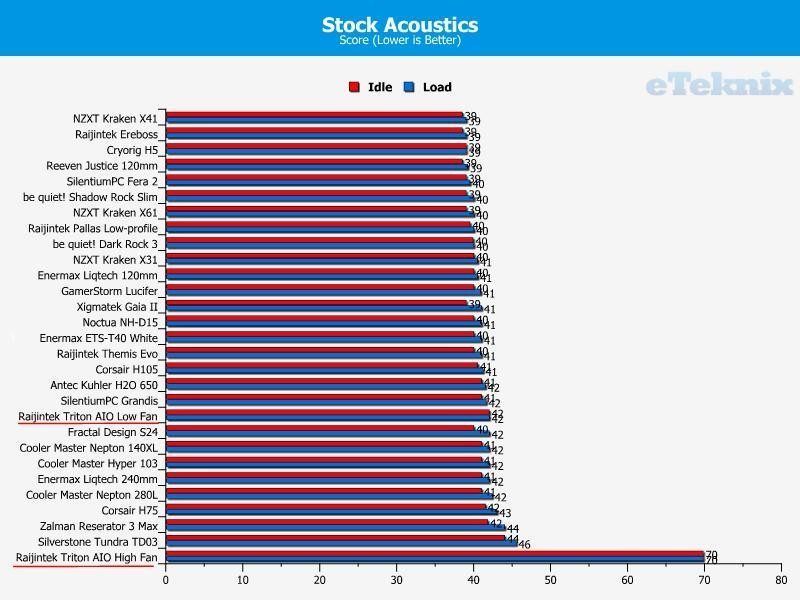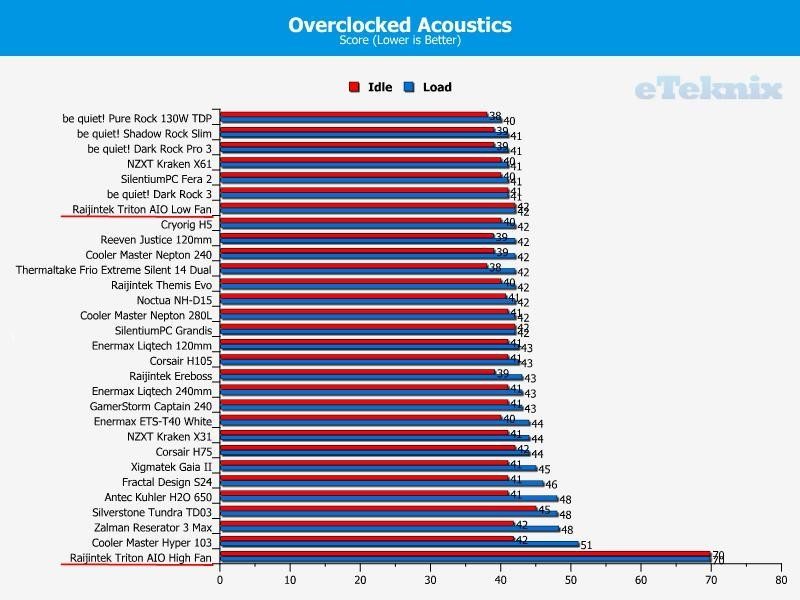Raijintek Triton AIO CPU Cooler Review
Dave Alcock / 10 years ago
Performance
With AIO coolers becoming more and more popular, manufactures have to do something to make them stand out. Raijintek have really taken this idea on board by not only allowing the expansion of the cooler, but also allowing you to change the fluid colour. That’s great, but it’s all pointless if the performance isn’t there, so let’s see how well it performs.
It is worth noting, that this cooler has its own fan controller, so I did the tests with the fan on its lowest speed (marked “Low Fan” in the chart) and at its highest speed (marked “High Fan” in the chart). This allows you to see the difference in both temperatures at stock and when it’s overclocked as well as the difference in noise.
At stock the Raijintek Triton blasts away most of its competition leaving only a few above it. A difference of only 3 degrees between having the fans on full blast or on the minimum setting shows that unless your overclocking you don’t even need to ramp up the fan speeds. A temp of 23 degrees delta under load with the fans on very low is very impressive to say the least.

When overclocked the cooler performs equally as well, even with the fan speed set to low, the cooler still manages to keep the CPU at 50 degrees delta. This isn’t ideal though, so you will want to increase the fan speed. At 100%, the cooler is in our top 10 with a delta temperature of just 35 degrees.

Noise is something that can be an issue with this cooler, but only when the fans are set above approximately 75%. At low, you can’t hear the fans at all, however you do hear a very faint humming from the pump, this is on a test bench however, so in a case I very much doubt you would hear it at all. At 100% the fans really are very loud, I very much doubt anyone would need to do this though unless you were going for some very nice benchmarking overclocks, if you are, then you wouldn’t be using them 24/7 so it wouldn’t be an issue.

Due to the acoustics being determined by the fan controller, the overclocked noise levels are the the same as when the processor is at stock, however, you can see some changes within the table to see where the competition stands.




















